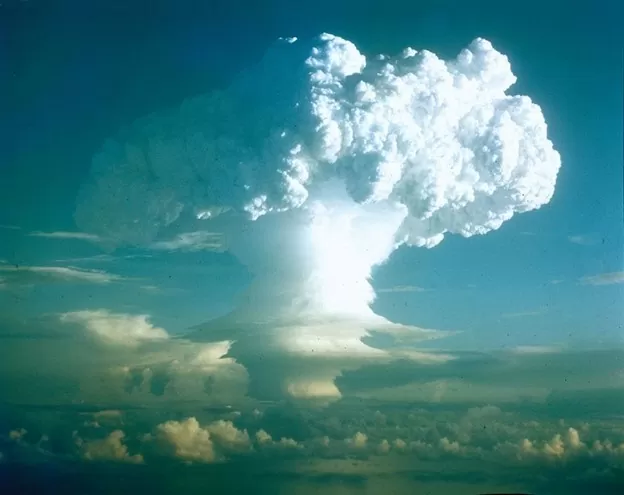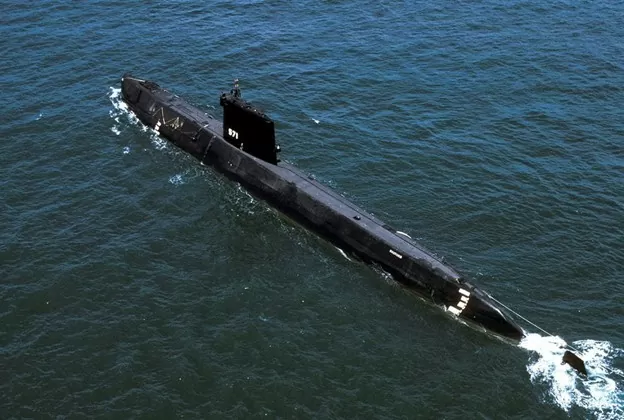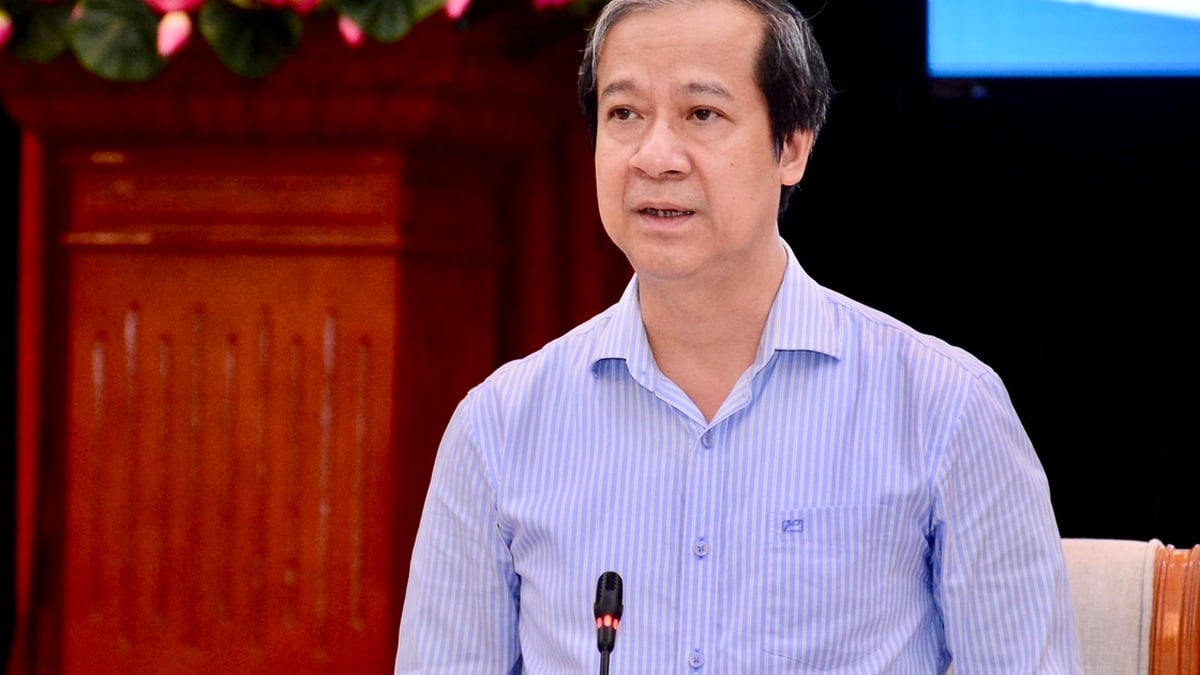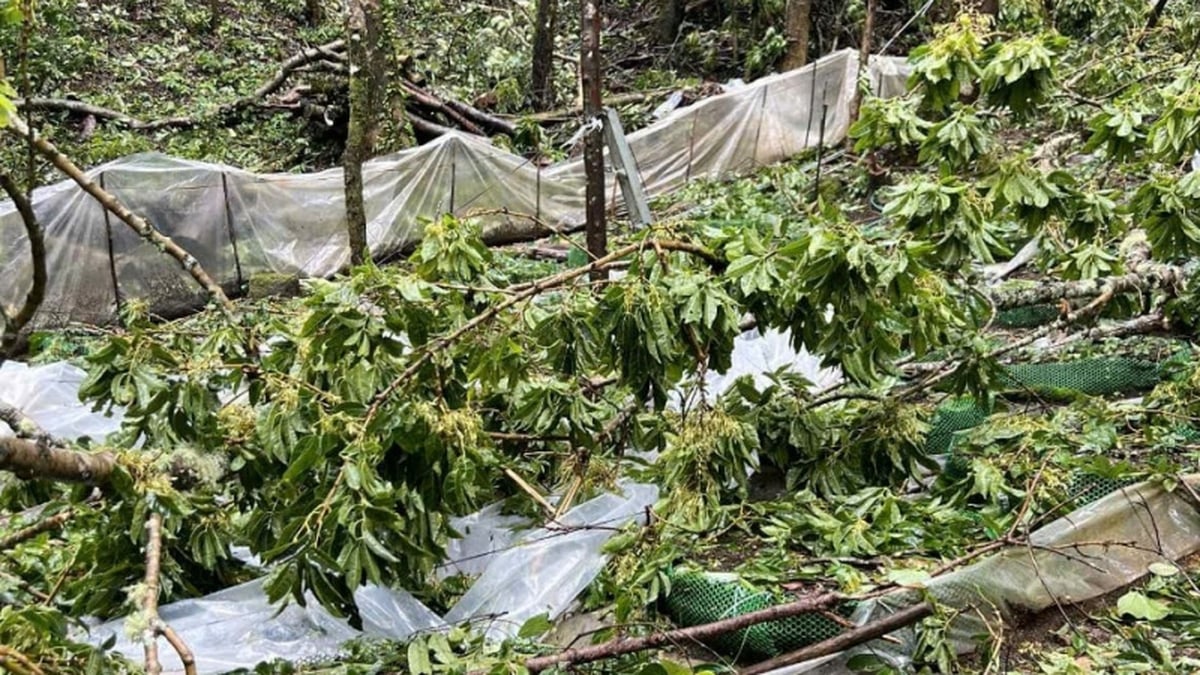In modern warfare, nuclear weapons stand out, not only because of their sheer destructive power but also because of their global threat potential. But there are other tools of terrifying destruction as well.
 |
| The first thermonuclear weapon, codenamed Mike, detonated at Enewetak Atoll in the Marshall Islands on November 1, 1952. The photo was taken at an altitude of 3,600 m, 80 km from the detonation site. (Source: US Air Force) |
Nuclear weapons – tools of mass destruction
Nuclear weapons are powerful weapons based on the fission or fusion of atoms. The first nuclear bomb was developed by the US Manhattan Project and dropped on the Japanese cities of Hiroshima and Nagasaki in August 1945, killing hundreds of thousands of people and marking the end of World War II.
Nuclear weapons work by releasing energy from a chain reaction of uranium or plutonium atoms (fission) or from the combination of nuclei in thermonuclear bombs (fusion). When detonated, it creates a powerful shock wave, intense heat, and deadly radioactive radiation.
The destructive power of nuclear weapons lies not only in their ability to destroy matter but also in their long-term consequences. Radiation can cause disease and genetic mutations for many generations, and seriously pollute the environment. Therefore, they are considered strategic weapons, more for deterrence than practical use.
During the Cold War, the United States and the Soviet Union developed huge nuclear arsenals that could destroy each other. Today, many countries still possess nuclear weapons and the threat from them is a global problem.
Many treaties such as the Nuclear Non-Proliferation Treaty (NPT) have been signed to prevent the spread and use of these weapons. However, according to the Encyclopedia Britiannica , there are still about 15,000 nuclear weapons on Earth, more than 90% of which belong to the United States and Russia.
Submarines: Strategic weapons under the sea
 |
| The USS Nautilus submarine, launched in 1954, is towed to Groton, Connecticut, USA, for display in May 1985. (Source: US Department of Defense ) |
Submarines are underwater combat vehicles that are capable of operating in stealth, providing a major advantage in warfare. Designed to dive deep and travel underwater for long periods of time, submarines play an important role in both traditional and modern navies. They are typically armed with torpedoes, cruise missiles, and sometimes nuclear weapons.
The history of submarine development began in the 17th century with crude prototypes, but the turning point came in the 20th century. During World War I, German U-boats caused great damage to Allied merchant and military ships. By World War II, submarines continued to play a strategic role in both the Atlantic and Pacific theaters.
Modern submarines are divided into two main categories: attack submarines (SSNs) and ballistic missile submarines (SSBNs). Attack submarines typically use nuclear propulsion, allowing them to operate continuously underwater without having to surface to refuel. SSBNs are capable of carrying nuclear missiles, serving as a strategic deterrent.
The ability to be invisible and move secretly makes submarines a formidable weapon. They are used not only for attack but also for reconnaissance, fleet protection and nuclear deterrence. With increasingly modern technology, submarines are an indispensable part of global naval forces.
Biological Weapons: Invisible Terror
 |
| Even gas masks are no protection against some biological weapons, a World War I example being mustard gas. (Source: US Department of Defense) |
Biological weapons are weapons that use disease-causing microorganisms or biological toxins to harm humans, animals or plants. They are among the most dangerous types of weapons of mass destruction, because they have the ability to spread quickly, causing widespread epidemics that are difficult to control.
Throughout the history of armed conflict, disease has often claimed more lives than weapons, and the deliberate introduction of infectious agents onto the battlefield is a dangerous strategy.
Some pathogens commonly used in biological weapons include anthrax (Bacillus anthracis), plague bacteria (Yersinia pestis), and smallpox virus.
The history of biological weapons dates back to ancient times, when armies dropped dead animals into enemy water sources to cause disease. However, with the development of modern biotechnology, these weapons have become more dangerous because of the ability to mutate and increase the virulence of pathogens.
World War I (1914-1918) was the era of many biological weapons, and the most feared was mustard gas, which had a pungent smell similar to mustard. The first time this gas was used was in July 1917 in Ypres, Belgium.
The soldiers reported seeing a “cloud” around their feet, but they were complacent because they were wearing gas masks. However, mustard gas is not only absorbed through the respiratory tract, but also through the skin. It causes redness, blisters, and terrible pain. The gas is not very soluble in water, so it cannot be washed off.
When inhaled into the lungs, it causes blisters on the lining of the lungs. If it gets into the eyes, mustard gas damages the cornea, leading to blindness. The more humid the place, the faster the mustard gas acts due to the hydrolysis reaction.
The most terrifying thing is that this poison gas does not kill the victims immediately, but causes their bodies to ulcerate, causing endless pain and prolonging the time to death for up to 6 weeks. In Ypres alone, mustard gas caused a “slow death” for 10,000 people.
Biological weapons not only cause human casualties but also create panic, disrupt social structures and put great pressure on the health system. Due to the difficulty of control and the risk of indiscriminate spread, biological weapons are banned under the Biological Weapons Convention (BWC) of 1972.
However, the risk of biological weapons still exists, especially when terrorist organizations or hostile states can develop and use them. Therefore, countries need to maintain a strong disease surveillance and prevention system to deal with this threat.
With the unpredictable dangers that modern weapons bring, the international community needs to increase its responsibility in maintaining world peace and stability.
International cooperation, enhanced diplomacy, and confidence building to control and reduce the risk of war are very important, in which treaties such as the NPT, the Comprehensive Nuclear-Test-Ban Treaty (CTBT) and arms control agreements play an essential role in preventing the spread of weapons of mass destruction and promoting dialogue between countries.
Source: https://baoquocte.vn/nhung-vu-khi-chet-choc-nhat-lich-su-ky-2-cong-con-hat-nhan-huy-diet-hang-loat-lieu-co-dam-gom-hon-mot-noi-khiep-so-vo-hinh-295827.html



































































































Comment (0)